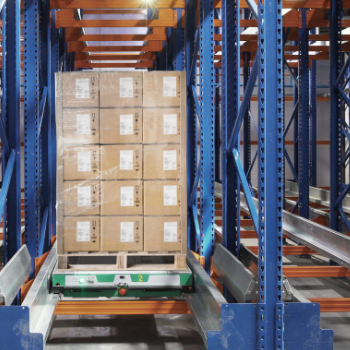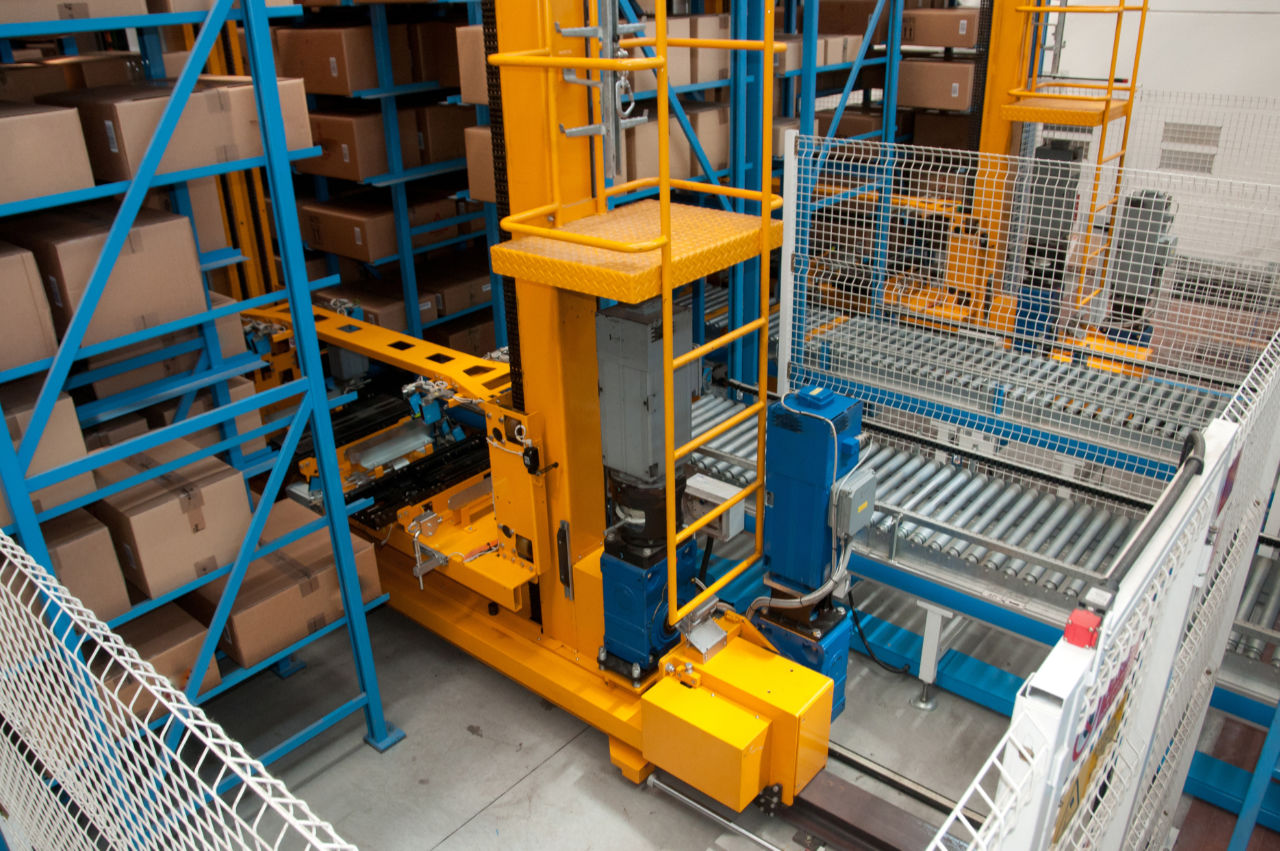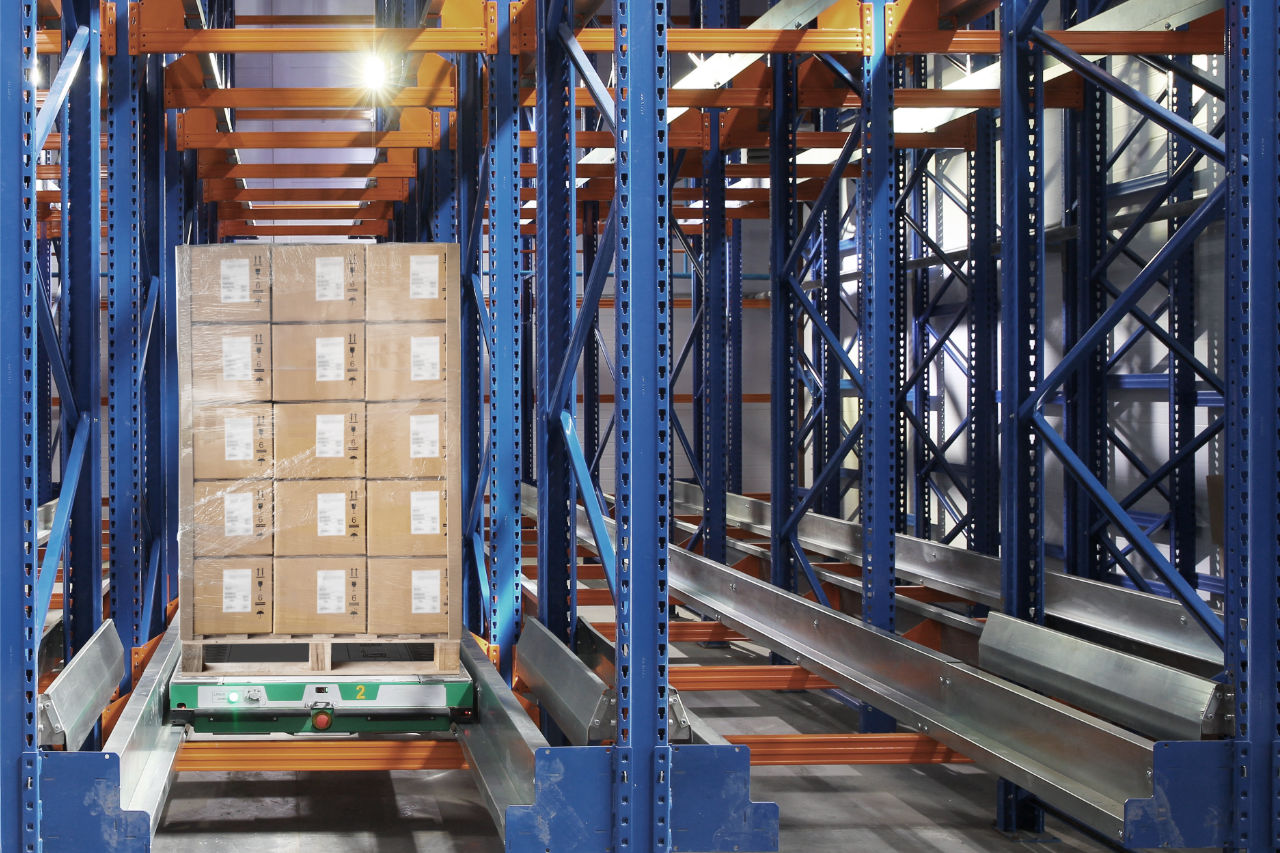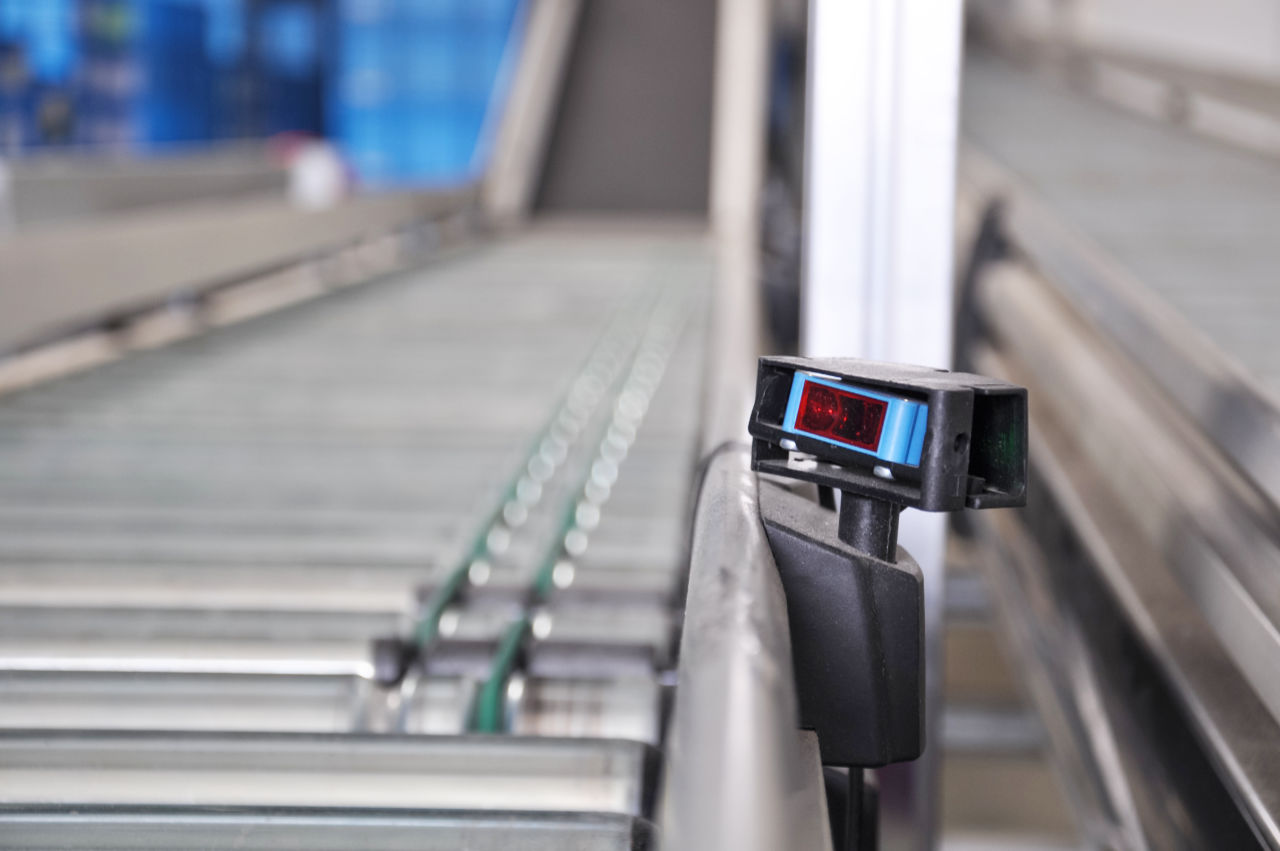The MFC (Material Flow Control) System – Qguar MFC – takes care of communication between a warehouse management system (WMS) and automated warehousing equipment. The program controls material flows, synchronizing simultaneous operation of multiple devices. The MFC Qguar system is capable of supervisory control over any device fitted with a PLC controller.
The MFC system (Qguar MFC) ensures smooth, safe and efficient flow of commodities in automated warehouses designed for any purpose. The process of materials flow planning may be constantly optimized and adapted to changes occurring in a warehouse, involving, for instance, extension of existing racks, modifications of the stored assortment and of the demand for commodities.
The Qguar MFC software has a standard interface to Qguar WMS – the superordinate warehouse management system. However, it may also cooperate with any other warehouse-managing software. MFC Qguar may be integrated with almost any warehouse automation device, irrespective of the technology implemented by its manufacturer.
The typical scheme of operation of MFC software looks like this: the WMS system generates commands to transport a specific stock unit (a pallet, a storage tray, a box) from a source location in the automated warehousing system to a target place.
The MFC system transforms the received logistic command into appropriate signals that control specific devices and sections of the automated storage area that are communicated to the relevant PLC, in order to realize the task appointed by the WMS. Having completed a task, the MFC system sends a message to the WMS to inform it about the result and status of each specific task within the process of its realization.
MFC Qguar System – What devices and objects can it manage and control?
- automatic racks, picking cranes;
- conveyors (roller/belt conveyors);
- structures of the grid/hive type;
- sorters;
- autonomous AGV/AMR carts;
- label applicators;
- sensors and measuring instruments.
MFC System – What objectives does it help to achieve?
Faster realization of orders – Order realization agility is of crucial importance, for instance, in e-commerce. Many clients perceive the time of delivery as one of the most important variables conditioning online purchase. E-commerce is often characterized by a high number of low-volume orders of a wide variety of products. Such ordering profile renders manual product picking very difficult. Automated warehousing components supported by the MFC system allow the commodity picking process to be realized at rates that are unattainable for manual product picking.
Optimized use of available space – As all the spaces indispensable to allow for manual processing of operations can be eliminated, the total footprint of a warehousing facility can be considerably reduced.
Large volumes of orders – Without process automation, it is extremely difficult to service large warehousing projects, as they require intense involvement of labour force and assumption of work rates that are difficult to attain.
Lower labour consumption – The software allows the demand for physical, repeatable work to be significantly reduced. This applies to multiple areas of warehousing activities, including high-bay storage, stock picking, intralogistics and packing of commodities. Lower labour consumption allows one to reassign employees to other tasks or reduce personnel employment costs of a warehouse. The system reduces company exposure to problems of availability of appropriate labour force on the market.
Lower quantity of errors – The MFC system allows the quantity of human errors – primarily those committed during stock picking – to be dramatically reduced. It also allows one to evade the problem of stock lost due to stock misplacement. It may also help eliminate numerous other problems that are less obvious, yet quite costly, such as locating heavy commodities on top of brittle goods. Another class of errors that can be eliminated covers those related to circulation of hard copies of documents and to data processing.
Enhanced safety – A higher level of automation allows one to prevent employees from being exposed to potentially dangerous tasks. Automation also improves the safety of commodities. It can reduce the risk of products getting damaged during transportation.
FAQ – MFC
The MFC synchronizes operation of multiple automation and transport systems and allows the operation of warehousing automation equipment to be integrated with the operation of a WMS-class warehouse management system.
The Qguar MFC system is aimed at automated warehouses designed for any purpose and at managing production automation processes.
The Qguar MFC software may manage the operation of many types of devices fitted with PLC controllers, which includes picking cranes, conveyors, structures of the grid/hive type, sorters or autonomous carts.
The MFC software is an indispensable component required to operate a warehouse fitted with high-level automation solutions or a production company that takes advantage of automated production lines.
Qguar MFC allows one to speed up automated processes, such as stock picking and shipments from a warehouse, and to optimize the use of available warehousing space and to reduce the quantity of errors.
Yes. The Qguar MFC system allows one to quickly modify the commodities flow plan and to react to changes – such as warehouse extension, new devices, shifts in assortment of commodities, etc. – in a continuous manner.
The first step of implementing the MFC system consists in analysing processes and creating (or adjusting) a detailed plan of stock flow.
Contact Form
Company
Contact
- +48 (12) 646 98 00
- +48 (12) 646 98 02
- info@quantum-software.com
- quantum-software.com




